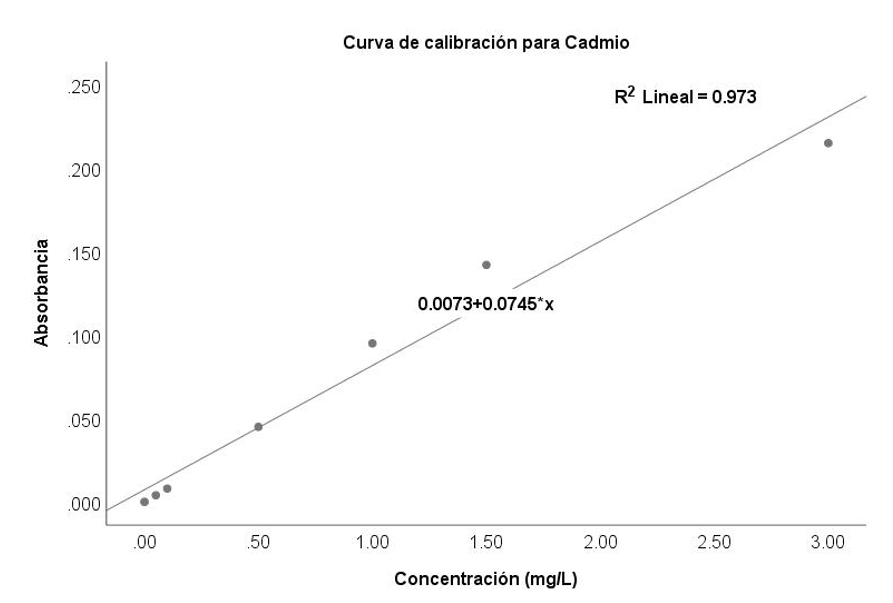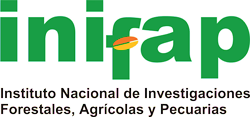Determination of lead and cadmium in water of the Mezquital Valley
DOI:
https://doi.org/10.29312/remexca.v16i30.4043Keywords:
heavy metals, organic matter, public healthAbstract
The Mezquital Valley, in the state of Hidalgo, has historically used wastewater from Mexico City for agricultural irrigation, which has favored local production, but has also generated environmental and health risks due to the presence of heavy metals with bioaccumulation capacity. The purpose of this research was to determine the levels of lead and cadmium in samples of wastewater, natural water, and drinking water from seven municipalities in the region. The determinations were made by flame atomic absorption spectrophotometry, following the NMX-AA-051-SCFI-2001 standard. The results showed that wastewater exceeded the permissible limits by 26% for Pb and 30% for cadmium. In natural water and drinking water, the excess was 70% and 100%, respectively, according to NOM-127-SSA1-2021 and NOM-001-SEMARNAT-2021. These findings highlight the need to establish continuous and specialized monitoring of heavy metals in water, in order to protect public health and promote safer use of water resources.
Downloads
References
Arti, M. R. 2023. Analysis of heavy metals and toxicity level in the tannery effluent and the environs. Environ Monit Assess. 195(554):1-13 https://doi.org/10.1007/s10661-023-11154-4.
Balli, N. and Leghouchi, E. 2018. Assessment of lead and cadmium in groundwater sources used for drinking purposes in Jijel (Northeastern Algeria). Global Nest Journal. 20(2):417-423.
Bernhoft, R. A. 2013. Cadmium toxicity and treatment. The Scientific World Journal. 3:1-7. https://doi.org/10.1155/2013/394652.
Chamizo, C. S.; Otazo, S. S.; Gordillo, M. E.; Suárez S. A.; González, R. C. J. and Muñoz, N. H. 2020. Megacity wastewater poured into a nearby basin: looking for sustainable scenarios in a case study. Water. 12(3):824-844. https://doi.org/10.3390/w12030824.
Contreras, J. D.; Meza, R.; Siebe, C.; Rodríguez, D. S.; López, V. Y. A.; Castillo, R. G.; Amieva, R. I.; Solano, G. S. G.; Mazari, H. M. and Silva, M. M. A. 2017. Health risks from exposure to untreated wastewater used for irrigation in the Mezquital Valley, Mexico: A 25-year update. Water Res. 15(123):834-850.
García, S. E. M. 2019. El agua residual como generadora del espacio de la actividad agrícola en el Valle del Mezquital, Hidalgo, México. Estudios Sociales. Revista de Alimentación Contemporánea y Desarrollo Regional. 29(54):1-34. https://doi.org/10.24836/es.v29i54.741.
Garduño, J. A. L.; Durán, Á. J. C.; Ortori, C. A.; Adelrazig, S.; Barrett, D. A. and Gomes, R. L. 2023. Delivering on sustainable development goals in wastewater reuse for agriculture: Initial prioritization of emerging pollutants in the Tula Valley, Mexico, Water Research. 238:1-14. https://doi.org/10.1016/j.watres.2023.119903.
Gidlow, D. A. 2004. Lead toxicity. Occupational Medicine. 54(2):76-81.
González, M. B.; Webster, R.; Fiedler, S.; Loza, R. E.; Hernández, J. M.; Ruíz, S. L.G. and Siebe, C. 2015. Short-term emissions of CO2 and N2O in response to periodic flood irrigation with wastewater in the Mezquital Valley of Mexico. Atmospheric Environment. 101:116-124.
Guédron, S.; Duwig, C.; Prado, B. L.; Point D.; Flores, M. G. and Siebe, C. 2014. (Methyl) Mercury, arsenic, and lead contamination of the world’s largest wastewater irrigation system: the Mezquital Valley Hidalgo Mexico. Water Air Soil Pollut. 225(2045):1-19. https://doi.org/10.1007/s11270-014-2045-3.
Hernández, E. A.; Arango, G. C.; Reyes, P. A.; Martínez, S. P.; Pita de la, P. C.; Macías, M. S.; Arias, P. A. and Breña, N. J. 2016. Water supply source evaluation in unmanaged aquifer recharge zones: The Mezquital Valley (México) case study. Water. 9(4):1-25.
Izquierdo, V. J. A.; Sánchez, G. M.; Peña, L. C. S.; Martínez, A. M. and Razo, L. M. 2022. Arsenic and fluoride in the drinking water in Tula City, México: challenges and lessons learned. Water Air Soil Pollut. 233(200):1-11. https://doi.org/10.1007/s11270-022-05674-x.
Kinuthia, G. K.; Ngure, V.; Beti, D.; Lugalia, R.; Wangila, A. and Kamau, L. 2020. Levels of heavy metals in wastewater and soil samples from open drainage channels in Nairobi, Kenya: community health implication. Scientific Reports. 10(8434):1-13. https://doi.org/10.1038/s41598-020-65359-5.
Lara, V. F. M.; Ventura, M. A.; Ehsan, M.; Rodríguez, O. A.; Vargas, M. J. y Landero, V. N. 2015. Contenido de Cd y Pb en suelo y plantas de diferentes cultivos irrigados con aguas residuales en el Valle del Mezquital, Hidalgo, México. Revista Internacional de Contaminación Ambiental. 31(2):127-132.
Lesser, L. E.; Mora, A.; Moreau, C.; Mahlknecht, J.; Hernández, A. A.; Ramírez, A. I. and Barrios, P. H. 2018. Survey of 218 organic contaminants in groundwater derived from the world’s largest untreated wastewater irrigation system. Mezquital Valley, Mexico. Chemosphere. 198:510-521.
Luneberg, K.; Schneider, D.; Siebe, C. and Daniel, R. 2018. Drylands soil bacterial community is affected by land-use change and different irrigation practices in the Mezquital Valley, Mexico. Scientific Reports. 8(1413):1-15.
Mancosu, N.; Snyder, R. L.; Kyriakakis, G. and Spano, D. 2015. Water scarcity and future challenges for food production. Water. 7(3):975-992. https://doi.org/10.3390/w7030975.
Oloruntoba, E. O.; Wada, O. Z. and Adejumo, M. 2022. Heavy metal analysis of drinking water supply, wastewater management, and human health risk assessment across secondary schools in Badagry coastal community, Lagos State, Nigeria. International Journal of Environmental Health Research. 32(9):1897-1914. https://doi.org/10.1080/09603123.2021.1926438.
Rinaldi, M.; Micali, A.; Marini, H.; Adamo, E. B.; Puzzolo, D.; Pisani, A.; Trichilo, V.; Altavilla, D.; Squadrito, F. and Minutoli, L. 2017. Cadmium, organ toxicity and therapeutic approaches: a review on brain, kidney and testis damage. Current Medical Chemistry. 24(35):3879-3893.
Rosas, B. M. and García, S. E. M. 2024. Wastewater and agriculture in Mezquital Valley (Mexico): analyzing alternatives from circular economy and ecological economy using bibliometric review. Discover Water. 4(61):1-17. https://doi.org/10.1007/s43832-024-00111-y.
Sansom G.; Cizmas, L.; Aarvig, K.; Dixon, B.; Kirsch, K. R.; Katare, A. and Sansom, L. 2019. Vulnerable populations exposed to lead-contaminated drinking water within Houston ship channel communities. International Journal Environmental Research and Public Health. 15(1-16):2745. https://doi.org/10.3390/ijerph16152745.
SCFI. 1980. Norma mexicana NMX-AA-003-1980. Aguas residuales-muestreo. Secretaria de Comercio y Fomento Industrial. Diario Oficial de la Federación.
SCFI. 2001. Norma oficial mexicana. NMX-AA-051-SCFI-2001. 2001. Análisis de agua-determinación de metales por absorción atómica en aguas naturales, potables, residuales y residuales tratadas-método de prueba.
SCFI. 2022a. Norma oficial mexicana. NOM-001-SEMARNAT-2021. Que establece los límites permisibles de contaminantes en las descargas de aguas residuales en cuerpos receptores de la nación. Diario Oficial de la Federación.
SCFI. 2022b. Norma oficial mexicana. NOM-127-SSA1-2021. Agua para uso y consumo humano. Límites permisibles de la calidad del agua. Diario oficial de la Federación.
Wu, X.; Cobbina, S. J.; Mao, G.; Xu, H.; Zhang, Z. and Yang L. 2016. Una revisión de la toxicidad y los mecanismos de metales pesados individuales y en mezclas en el medio ambiente. Environmental Science and Pollution Research. 23(9):8244-59. https://doi.org/10.1007/s11356-016-6333-x.

Published
How to Cite
Issue
Section
License
Copyright (c) 2025 Revista Mexicana de Ciencias Agrícolas

This work is licensed under a Creative Commons Attribution-NonCommercial 4.0 International License.
The authors who publish in Revista Mexicana de Ciencias Agrícolas accept the following conditions:
In accordance with copyright laws, Revista Mexicana de Ciencias Agrícolas recognizes and respects the authors’ moral right and ownership of property rights which will be transferred to the journal for dissemination in open access. Invariably, all the authors have to sign a letter of transfer of property rights and of originality of the article to Instituto Nacional de Investigaciones Forestales, Agrícolas y Pecuarias (INIFAP) [National Institute of Forestry, Agricultural and Livestock Research]. The author(s) must pay a fee for the reception of articles before proceeding to editorial review.
All the texts published by Revista Mexicana de Ciencias Agrícolas —with no exception— are distributed under a Creative Commons License Attribution-NonCommercial 4.0 International (CC BY-NC 4.0), which allows third parties to use the publication as long as the work’s authorship and its first publication in this journal are mentioned.
The author(s) can enter into independent and additional contractual agreements for the nonexclusive distribution of the version of the article published in Revista Mexicana de Ciencias Agrícolas (for example include it into an institutional repository or publish it in a book) as long as it is clearly and explicitly indicated that the work was published for the first time in Revista Mexicana de Ciencias Agrícolas.
For all the above, the authors shall send the Letter-transfer of Property Rights for the first publication duly filled in and signed by the author(s). This form must be sent as a PDF file to: revista_atm@yahoo.com.mx; cienciasagricola@inifap.gob.mx; remexca2017@gmail.
This work is licensed under a Creative Commons Attribution-Noncommercial 4.0 International license.


